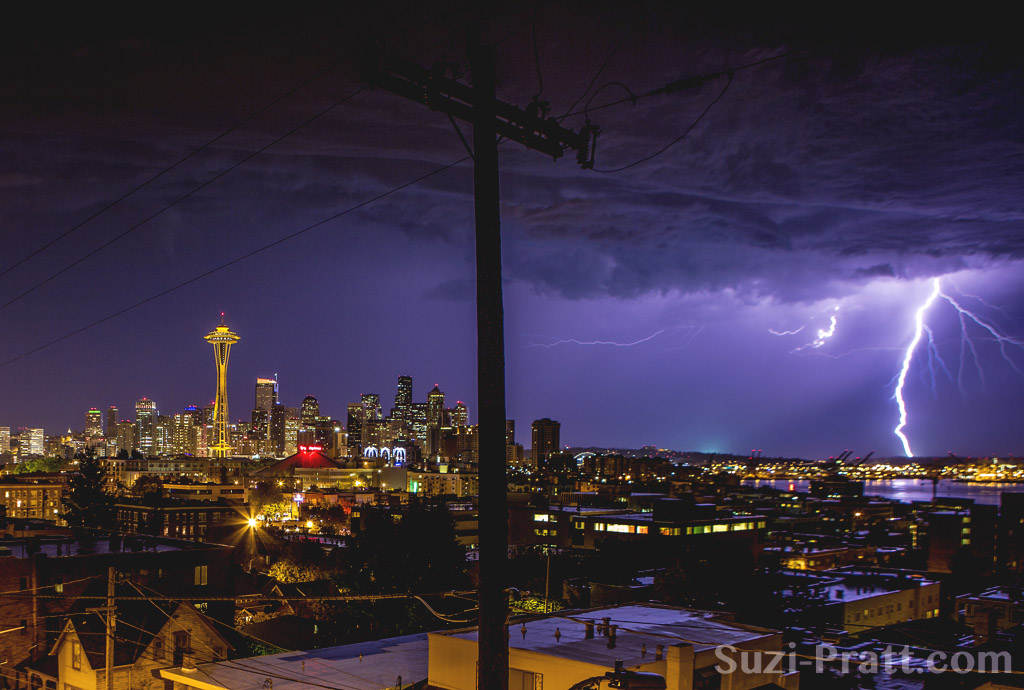The benefit to starting photo editing of a night’s work at 12 midnight is the rare chance to see and shoot an epic thunder and lightning show that illuminated Seattle’s sky late Friday night/early Saturday morning. I posted these photos over on my portfolio website, but figured I’d write a little about how the shots were achieved. Here’s the story. Beginning shortly after midnight, I could see the lightning streaks bolt through the sky out of the corner of my eye as I was working in PhotoShop. Finally, my creative urge took over, and I figured I’d better take advantage of the show, plus my fortuitous view of the Space Needle from my living room. Below is a photo of the typical night time view from my balcony/living room. This shot was taken at an extremely high ISO and low shutter speed, as it was just before I set up the tripod.
I had an idea of how to shoot lightning, but had never tried it before. To verify my idea, I did a quick Google search and found a simple tutorial on how to photograph lightning. Technically speaking, it was pretty simple, essentially having you do a long exposure. The trick was in the timing. Getting lightning in the shot was all about luck. My hand fired my remote trigger as a reaction to the lightning that exploded on the left-hand side. Unfortunately, it was a hair too late, and this shot only catches a few faint streaks after the biggest bolt already passed through. The best way to capture lightning? Try to figure out the approximate timing of the lightning and set off your long exposure just before the lightning will (supposedly) strike. Or take about 20 long exposures in a row in hopes of catching something.
I grabbed my Canon 5D Mark III, since it was a better low-light performer than my Canon 6D, and 24-70mm f/2.8 lens, figuring a wide shot was probably best if I was relying on luck to allow lightning to enter my frame. I also grabbed my remote trigger to eliminate camera shake when I set the shutter off. I loaded the camera up on a tripod, and went outside on my balcony. Unfortunately, my first tripod of choice was a cheap plastic model that would do in a pinch, but ultimately wasn’t ideal for nighttime shooting. After snapping several shots, all of which captured some form of lightning, I bolted for my car to retrieve my trusty Benro tripod–a much better deal. By the time I got my gear set up on the Benro and had it positioned in my ideal composition, the lightning died down significantly. It was to the point where I caught about 50 long exposure frames in a row of the same scene (the one below), all sans lightning. Oh well.
At least those first 4 shots I grabbed (embedded below) turned out decently with some fixing in PhotoShop. They got some pretty decent (ok, more than decent!) likes and shares on Facebook and a mention in the Seattle P.I. Not bad for my first shot at capturing lightning!








Helpful information. Fortunate me I discovered your website by chance, and I am surprised why this twist of fate didn’t took place in advance!
I bookmarked it.